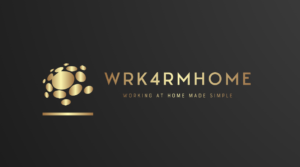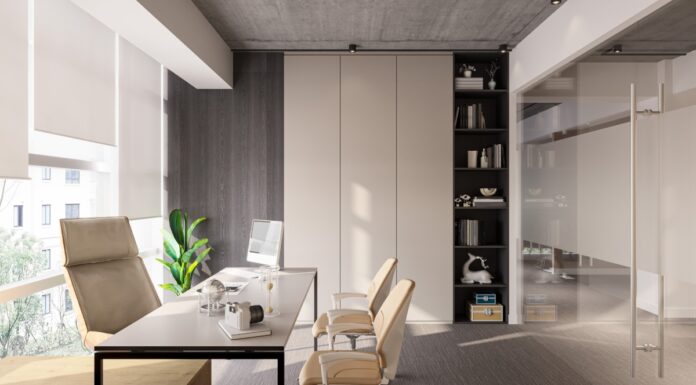The rise of remote work has made the home office an essential part of our daily lives. While working from home brings flexibility, it also presents challenges, especially when it comes to maintaining productivity. An effective home office environment can make a significant difference in your work output, focus, and overall well-being. Whether you’re a full-time remote employee, freelancer, or someone who works from home occasionally, creating a workspace that promotes productivity is key.
In this guide, we’ll explore tips and strategies for designing a home office that enhances efficiency and helps you stay organized. From choosing the right furniture to managing distractions, we’ll cover everything you need to know to transform your home into a productive work haven.
1. Choose the Right Location
Your home office location can greatly affect your ability to concentrate and be productive. The best spot is a dedicated, quiet area with minimal distractions. If possible, choose a room with a door to separate your work from your home life.
Key Considerations:
- Separate from high-traffic areas: Avoid setting up your office in places where family members frequently pass by, such as the living room or kitchen. These areas tend to have more noise and distractions.
- Natural light: Try to pick a space with good natural lighting. Sunlight boosts mood, energy levels, and productivity. Position your desk near a window to take advantage of the natural light.
- Size and privacy: Ensure the space is large enough for your desk, chair, and office equipment, but also private enough to allow for focused work.
Alternatives for Small Spaces:
- If you don’t have an extra room to dedicate to a home office, carve out a small workspace in your bedroom, hallway, or even a corner of the dining room. Use room dividers or furniture to create boundaries between your work and living areas.
2. Invest in Ergonomic Furniture
Ergonomics plays a crucial role in maintaining comfort and preventing injury, especially if you spend long hours working at a desk. Investing in ergonomic furniture can enhance your productivity by reducing fatigue and discomfort.
a) Desk
Your desk should have enough space to accommodate your computer, paperwork, and other necessary tools. It should also be at the right height to ensure proper posture.
- Adjustable desks: Consider using a standing desk or an adjustable desk that allows you to switch between sitting and standing. Standing desks help reduce back pain and improve circulation.
b) Chair
A quality ergonomic chair is essential for maintaining good posture and preventing strain on your back and neck.
- Lumbar support: Look for a chair with lumbar support that aligns with the natural curve of your spine.
- Adjustability: The chair should be adjustable in terms of height, armrests, and tilt to ensure a personalized fit.
- Comfort: Make sure your chair is cushioned enough for long hours but still supportive.
c) Monitor and Screen Positioning
Proper screen positioning helps prevent eye strain, neck pain, and headaches.
- Position your monitor at eye level, about 20-30 inches from your eyes. You shouldn’t have to tilt your head or squint to see the screen.
- If you use a laptop, consider getting a laptop stand to elevate the screen and use an external keyboard and mouse for comfort.
3. Organize Your Space for Efficiency
A cluttered workspace can lead to a cluttered mind. Keeping your home office organized will boost productivity by making it easier to find what you need and reducing stress.
a) Desk Organization
Keep only essential items on your desk to avoid distractions. Store papers, office supplies, and other items in drawers or cabinets.
- Drawer organizers: Use drawer dividers or trays to keep pens, paper clips, and other small items organized.
- Paper trays: Use file organizers or paper trays to keep documents sorted and easily accessible.
b) Storage Solutions
Efficient storage helps you stay organized without cluttering your workspace.
- Shelves: Install shelves above your desk or around your office to store books, folders, and office supplies.
- Cabinets and drawers: Invest in storage cabinets or drawers to keep your workspace tidy. Label boxes or bins to quickly locate items when needed.
c) Cable Management
Messy cables can make your workspace look disorganized and create unnecessary distractions. Use cable clips, ties, or a cable management box to neatly organize cords.
4. Minimize Distractions
One of the biggest challenges of working from home is managing distractions. From family members and pets to household chores, distractions can derail your focus and reduce productivity. Setting boundaries and creating an environment conducive to concentration is essential.
a) Set Boundaries
Communicate with your family or housemates about your work hours and the importance of uninterrupted focus during these times.
- Dedicated work hours: Establish a work schedule and stick to it, so others know when you’re off-limits.
- Do not disturb sign: If you have a door, consider putting up a sign when you’re in meetings or deep work sessions to prevent interruptions.
b) Soundproofing
If noise is a constant issue, consider soundproofing your workspace to reduce distractions.
- Noise-canceling headphones: Invest in noise-canceling headphones to block out ambient sounds while working.
- White noise machine: A white noise machine can help drown out background noise, creating a more focused work environment.
c) Limit Digital Distractions
Digital distractions, such as social media or personal emails, can also sap productivity. Use apps like “Focus@Will,” “RescueTime,” or “Freedom” to block distracting websites and apps during work hours.
5. Optimize Your Lighting
Lighting plays a key role in productivity and focus. Poor lighting can cause eye strain, headaches, and fatigue, while the right lighting can enhance mood and efficiency.
a) Natural Light
Natural light has been shown to improve mood and productivity. Set up your home office near a window to take advantage of daylight. However, make sure to position your desk in a way that avoids glare on your computer screen.
b) Task Lighting
If your home office lacks sufficient natural light, use task lighting to brighten your workspace. A good desk lamp with adjustable brightness and angle can provide the focused light you need for reading, writing, or working on your computer.
- LED lights: Opt for energy-efficient LED lights, which provide consistent brightness without flickering.
c) Ambient Lighting
Overhead lighting, or ambient lighting, should illuminate the entire room without casting harsh shadows. Soft, warm light can make your workspace feel cozy and inviting.
6. Incorporate Elements That Enhance Focus and Creativity
Your home office should not only be functional but also a space where you feel inspired and motivated. Adding personal touches and elements that promote focus can boost your productivity and creativity.
a) Greenery
Indoor plants can improve air quality and create a calming atmosphere. Adding a few plants to your home office can make the space feel more welcoming and reduce stress.
- Low-maintenance plants like succulents, snake plants, or peace lilies are great choices for your home office.
b) Personal Touches
Personalize your workspace with photos, artwork, or items that inspire you. However, avoid going overboard with decorations, as too many visual distractions can hamper productivity.
c) Color Choices
The color of your home office can influence your mood and productivity. Neutral tones, such as white, beige, or light gray, create a calm and focused environment, while pops of blue or green can stimulate creativity and reduce stress.
7. Technology and Tools for a Productive Home Office
Having the right technology and tools can streamline your workflow and improve efficiency. Here’s a list of essential tech and tools for a productive home office:
a) High-Speed Internet
Reliable, high-speed internet is the backbone of any productive home office. Ensure your internet connection can handle video conferencing, large file transfers, and other work-related tasks without lag.
- Wi-Fi extenders: If your workspace is far from your router, consider using a Wi-Fi extender to boost your internet signal.
b) Backup Power Solutions
Power outages can disrupt your workflow, so having a backup power supply is essential. Consider investing in an uninterruptible power supply (UPS) to keep your computer and internet running during short power outages.
c) Productivity Software
Using the right tools can help you stay organized, collaborate with colleagues, and manage tasks efficiently.
- Project management tools: Use tools like “Trello,” “Asana,” or “ClickUp” to manage projects and tasks.
- Communication platforms: “Slack” and “Microsoft Teams” are excellent tools for remote collaboration and communication.
- Time management apps: Use tools like “Toggl” or “Clockify” to track time spent on tasks and improve time management.
Conclusion
Creating a productive home office environment goes beyond finding a desk and chair—it’s about curating a space that supports your professional goals while minimizing distractions. With the right location, ergonomic furniture, proper lighting, and a clutter-free environment, you can boost your efficiency and enjoy working from home. Incorporating personal touches and greenery will make your office more inviting, while smart technology will streamline your workflow. By taking these steps, you can create a home office that helps you stay focused, organized, and productive.











